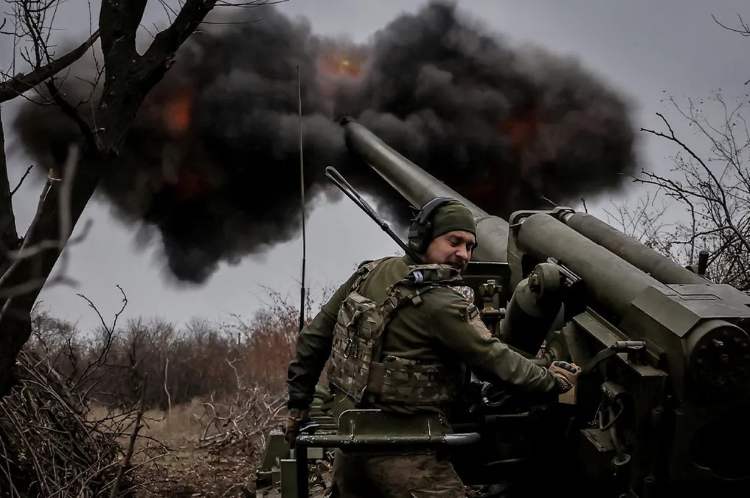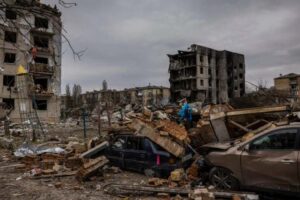
The Ukraine war is shifting again. The past few weeks have seen small but telling changes on the battlefield and in the chancelleries of Europe. Russia has pressed ahead in Donetsk, inching forward around Avdiivka and pushing Ukrainian forces to divert scarce ammunition to plug emerging gaps. Ukraine, meanwhile, has intensified drone strikes deep inside Russian territory, hitting oil depots and rail hubs. These strikes signal not strength but adaptation: Kyiv is trying to raise the economic cost of war for Russia as its own manpower and ammunition shortages become harder to ignore.
Diplomatic manoeuvres mirror this battlefield strain. Leaders in Berlin, Paris, and Warsaw have pushed new security assurances to Ukraine, but with the quiet caveat that such commitments fall short of NATO membership. Washington has approved fresh weapons packages, but each one is accompanied by bitter congressional fights and signs of donor fatigue. The EU has passed another sanctions round targeting Russia’s energy and metals trade, yet the impact is diluted by Russia’s ability to reroute exports to Asia.
This mix of sluggish advances, political bickering, and sanctions that bite unevenly points to one reality: the Ukraine war is entering a new phase. It is a phase in which neither side has the strength for a decisive breakthrough. A long, grinding conflict—frozen in place but still lethal — looks more likely than dramatic territorial changes.
READ I India-China pharma trade opens up a $6 bn opportunity
Ukraine war: Where exhaustion meets limits
Ukraine’s 2024 counteroffensive failed to deliver the sweeping gains that earlier campaigns had raised hopes for. Russia has fortified a defensive line that is harder to breach without overwhelming firepower and air superiority — neither of which Ukraine has. Kyiv faces a demographic constraint that is becoming more visible. Ukraine’s government is drafting older recruits and considering stricter mobilisation rules. War weariness is setting in.
Russia is not invincible either. Its economy has grown on the back of war spending but remains heavily dependent on oil revenues and parallel imports. Defence production has risen, yet it still faces shortages of electronics and precision components. Reports from independent monitors such as the Institute for the Study of War and the UK defence ministry suggest Russia’s incremental gains come with high casualty rates. Moscow can absorb losses, but at a cost.

The West also has limits. European stockpiles are thin. The US Congress is sharply divided on further aid. Inflation pressures have made voters wary of indefinite support commitments. Even the latest US and EU weapons packages come with longer delivery timelines. That delays the possibility of any fast Ukrainian resurgence.
Put simply, all three players—Ukraine, Russia, and the West—are converging toward exhaustion. Wars do not end when victory becomes impossible; they end when continuing costs outweigh expected gains. The Ukraine war is moving toward that threshold.
A frozen war does not mean a peaceful border. It means a hardened, stable frontline with sporadic shelling and drone strikes, but no major offensives. Think of the India-Pakistan LoC or the post-1953 Korean border. The conflict becomes long-term, unresolved, and politically radioactive—but less prone to sudden collapse. Several forces point in this direction.
Ukraine’s manpower constraints and ammunition shortages limit its ability to reclaim territory at scale. Even Western military planners now say privately that Kyiv is unlikely to mount a major offensive before late 2025. Moreover, Russia’s defensive posture suggests it is preparing for a war of attrition rather than a bold march westward. Its gains are small and symbolic, not strategically decisive.
Western governments also face rising political costs. Voters in the US, Germany, France, and the UK are showing signs of fatigue. Every weapons package now requires political bargaining. Sanctions have not crippled the Russian economy; instead, they have forced a structural pivot to Asia. The sum of these factors is clear: the Ukraine war’s centre of gravity has shifted from battlefield momentum to long-term endurance. And in such wars, lines often freeze long before they are officially recognised as borders.
Three plausible scenarios in Ukraine war
A prolonged stalemate or frozen conflict: Frontlines shift marginally but remain broadly stable. Ukraine relies on drones, long-range missiles, and defensive operations. Russia continues grinding advances in select pockets but avoids high-risk offensives. Both sides refortify positions. This scenario extends the conflict without resolving it. The West maintains moderate aid but avoids escalation.
Slow Ukrainian advance: If US and EU support accelerates, and if Ukraine receives more air defence systems and long-range strike capabilities, limited advances are possible. This would require a political consensus that is currently missing in Washington and parts of Europe. It would also require Ukraine to mobilise more troops. The probability is low but not zero.
Negotiated settlement under Russian terms: If Western aid slows further, Ukraine could lose its ability to defend key positions. In such a scenario, Kyiv may be nudged toward talks where Moscow demands recognition of its territorial gains. Russia will frame this as “new realities on the ground.” A weak settlement could create long-term instability and embolden future aggression. This outcome becomes more likely if political changes in the US or Europe shift the balance.
What the West should do to end Ukraine war
The West faces a difficult but unavoidable choice: continue supporting Ukraine at levels that prevent collapse but avoid overpromising. The costs of allowing Russia to dictate terms are high. A Russian victory, or even the perception of one, would reshape European security and undermine deterrence elsewhere, including in the Indo-Pacific. Yet the West must also recognise that Ukraine cannot defeat Russia militarily under current constraints. A strategy built around hopes of a decisive Ukrainian breakthrough is unrealistic.
The better path lies between fatalism and hubris. The West should adopt a long-term containment strategy—one that keeps Ukraine viable without demanding unrealistic battlefield gains. This means steady, predictable flows of ammunition, air defence, and drones. Europe must also accelerate rearmament. NATO’s industrial base cannot remain dependent on US politics. A stronger European military pillar is essential for a long conflict.
The West should signal openness to negotiations but only from a position of strength. Kyiv should not be pressured into concessions now. A frozen conflict today may still create political space for talks later.
The Ukraine war is entering a slow, grinding phase. It will test political discipline more than military might. Western leaders must accept that Ukraine conflict will not end with a parade in Kyiv or a transformation in Moscow. It will end with leverage—earned not by dramatic offensives, but by endurance.
A frozen front is not victory, but it is better than defeat. The task now is to keep Ukraine standing, keep Russia contained, and prevent an ugly war from mutating into an unstable peace. That requires clarity of purpose and steadiness of support. The next year will decide whether Europe enters a new era of insecurity or builds the resolve needed to shape the continent’s future.
